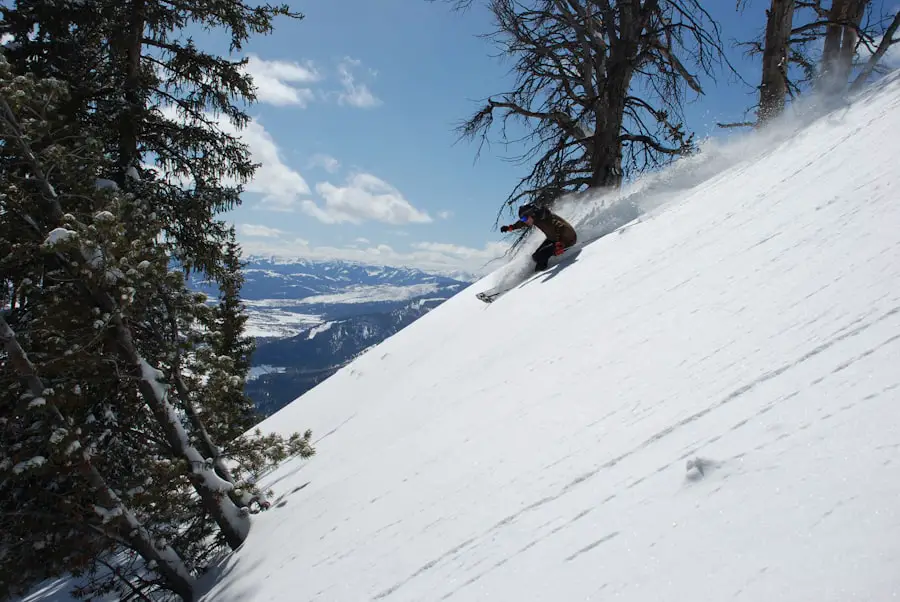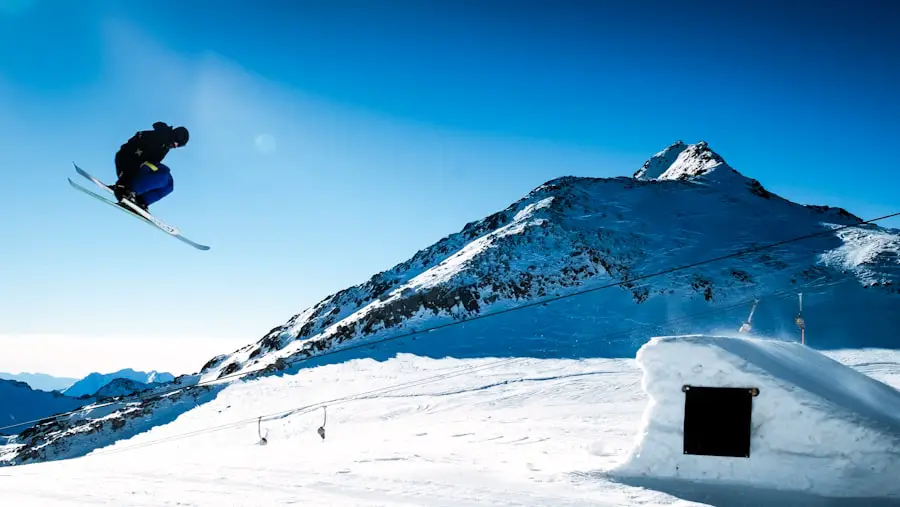Selecting the appropriate ski bag is a crucial first step in ensuring that your skiing experience is both enjoyable and hassle-free. Ski bags come in various shapes, sizes, and materials, each designed to cater to different needs and preferences. When choosing a ski bag, consider the type of skiing you will be doing—whether it’s alpine skiing, backcountry skiing, or freestyle.
For instance, a padded ski bag is essential for those who frequently travel with their equipment, as it provides extra protection against impacts during transit. Conversely, if you are simply heading to a local resort, a lightweight, unpadded bag may suffice. Another important factor to consider is the length of your skis.
Ski bags typically come in various lengths to accommodate different ski sizes. It’s essential to measure your skis accurately and choose a bag that offers a snug fit without being overly tight. A bag that is too short can leave your skis exposed to damage, while one that is too long may lead to unnecessary bulk and weight.
Additionally, look for features such as external pockets for storing accessories like goggles and gloves, as well as comfortable carrying straps or wheels for ease of transport. Investing in a high-quality ski bag can save you from potential headaches down the line, ensuring that your gear arrives at your destination in pristine condition.
Key Takeaways
- Choose a ski bag with durable material and padding to protect your skis during travel
- Use packing cubes or compartments to organize your ski gear and prevent items from shifting
- Roll your ski clothing to save space and prevent wrinkles
- Use ski ties or straps to secure your skis and poles together and prevent damage
- Utilize every inch of space in your ski bag by packing smaller items inside your ski boots and helmet
Organizing Your Gear
Once you have selected the right ski bag, the next step is to organize your gear effectively. A well-organized ski bag not only makes packing easier but also ensures that you can quickly access your equipment when you arrive at the slopes. Start by laying out all your gear before you begin packing.
This includes your skis, poles, boots, clothing, and any additional accessories such as helmets and goggles. By visualizing everything you need, you can better determine how to allocate space within your bag. When organizing your gear, consider using packing cubes or compression bags for smaller items like socks, base layers, and gloves.
These can help keep your clothing compact and prevent it from shifting during transit. For larger items like jackets and pants, roll them instead of folding to save space and minimize wrinkles. Additionally, place heavier items at the bottom of the bag to maintain balance and make it easier to carry.
By taking the time to organize your gear thoughtfully, you can streamline your packing process and ensure that everything is easily accessible when you hit the slopes.
Packing Tips for Ski Clothing

Packing ski clothing requires a strategic approach to ensure that you stay warm and dry while maximizing space in your ski bag. Start with base layers, which are essential for regulating body temperature and wicking moisture away from the skin. Choose lightweight, moisture-wicking fabrics that can be easily rolled or folded without taking up too much space.
It’s advisable to pack at least two sets of base layers to accommodate changes in weather or unexpected spills. Next, consider your mid-layers and outer layers. Fleece jackets or insulated vests are excellent mid-layer options that provide warmth without adding excessive bulk.
When packing outer layers such as waterproof jackets and pants, ensure they are packed last so they are easily accessible upon arrival. Additionally, don’t forget about accessories like hats, neck gaiters, and gloves; these can be stuffed into pockets or gaps within your bag to utilize every inch of space effectively. By carefully selecting and packing your ski clothing, you can ensure that you are prepared for varying weather conditions while keeping your bag organized.
Protecting Your Skis and Poles
| Item | Protection Method |
|---|---|
| Skis | Use ski bags for transportation and storage |
| Poles | Store in a padded pole bag or wrap with foam for protection |
| Edges | Use edge guards to prevent damage during transport |
| Base | Wax the base and store in a dry place to prevent rust |
Protecting your skis and poles during travel is paramount to maintaining their performance and longevity. Most ski bags come with padding designed specifically for this purpose; however, additional measures can enhance protection further. Before placing your skis in the bag, consider wrapping them in a soft cloth or bubble wrap to provide an extra layer of cushioning against impacts.
This is particularly important if you are traveling by air or using public transportation where handling may be rough. When it comes to ski poles, many bags feature dedicated compartments or straps for securing them alongside the skis. If your bag does not have these features, consider using a separate pole bag or wrapping them together with a strap to prevent them from shifting during transit.
Additionally, be mindful of the bindings on your skis; if they are adjustable or removable, ensure they are secured properly to avoid damage. Taking these precautions will help ensure that your skis and poles arrive at your destination ready for action.
Maximizing Space in Your Ski Bag
Maximizing space in your ski bag is essential for efficient packing and ease of transport. One effective strategy is to utilize every available nook and cranny within the bag. For instance, consider stuffing smaller items like socks or gloves inside your ski boots; this not only saves space but also helps maintain the shape of the boots during travel.
Similarly, use any external pockets on the ski bag for items that you may need quick access to, such as goggles or snacks. Another technique for maximizing space is to take advantage of compression bags for clothing. These bags allow you to compress bulky items like jackets and pants into a smaller size, freeing up valuable space for other gear.
Additionally, consider packing items vertically rather than horizontally; this can create more room within the bag and make it easier to find what you need without rummaging through everything. By employing these strategies, you can ensure that your ski bag is packed efficiently while still accommodating all necessary gear.
Packing Essentials for the Slopes

Safety First
A properly fitting helmet and goggles with UV protection and anti-fog features are must-haves in your ski bag. These items are crucial for protecting yourself from potential injuries and ensuring clear visibility while skiing.
Packing a reusable water bottle is essential for staying hydrated throughout the day; many resorts have refill stations available on-site. Energy bars or snacks are also important for maintaining energy levels during long days on the mountain.
Be Prepared for the Unexpected
Furthermore, consider bringing a small first-aid kit containing band-aids, pain relievers, and blister treatment supplies. This can be invaluable in case of minor injuries or discomfort while skiing. By including these essentials in your ski bag, you can enhance your overall experience on the slopes.
Tips for Packing Ski Boots
Packing ski boots requires careful consideration due to their size and weight. To start with, always pack your boots separately from your skis if possible; this prevents them from being crushed or damaged during transit. Many skiers opt for dedicated boot bags that offer additional padding and compartments specifically designed for boots.
If you don’t have a boot bag, consider wrapping each boot in a soft cloth or placing them in plastic bags to protect them from scratches. When packing your boots, remove any liners if they are detachable; this allows them to dry out more effectively after use and reduces moisture buildup during travel. Place the liners inside the boots or in a separate compartment within your ski bag to keep everything organized.
Additionally, utilize any available space within the boots themselves by stuffing them with smaller items like socks or gloves; this not only saves space but also helps maintain their shape during transport. By following these tips for packing ski boots, you can ensure they remain protected while maximizing space in your ski bag.
Securing Your Ski Bag for Air Travel
Traveling by air with ski equipment necessitates extra precautions to secure your ski bag effectively. First and foremost, check with your airline regarding their specific policies on sporting equipment; this will help you understand any fees or restrictions that may apply before you arrive at the airport. Many airlines require that ski bags be clearly labeled with identification tags containing your contact information; this is crucial in case your bag gets lost during transit.
To further secure your ski bag, consider using a lock or cable tie to prevent unauthorized access while it’s being handled by airline staff. Additionally, reinforce vulnerable areas of the bag with extra padding or bubble wrap around the tips of the skis and bindings; this will help absorb shocks during handling and reduce the risk of damage. Finally, take photos of your packed ski bag before checking it in; this documentation can be helpful if any issues arise regarding lost or damaged equipment during travel.
By taking these steps to secure your ski bag for air travel, you can minimize potential risks and enjoy peace of mind as you embark on your skiing adventure.
When preparing for your next ski trip and packing your ski bag for air travel, it’s important to also consider bringing along some essential travel gadgets. One useful item to have is a portable phone charger, such as the ones recommended in this article 3 Portable Phone Chargers You Need for Your Next Getaway. These chargers will ensure that your devices stay powered up throughout your journey. Additionally, you may want to pack a pair of versatile traveler pants, as suggested in this article Traveler Pants, for comfortable and practical attire while traveling. And for a good night’s sleep in unfamiliar surroundings, consider bringing a portable white noise machine like the one featured in this article

1 thought on “Efficient Ski Bag Packing for Air Travel”